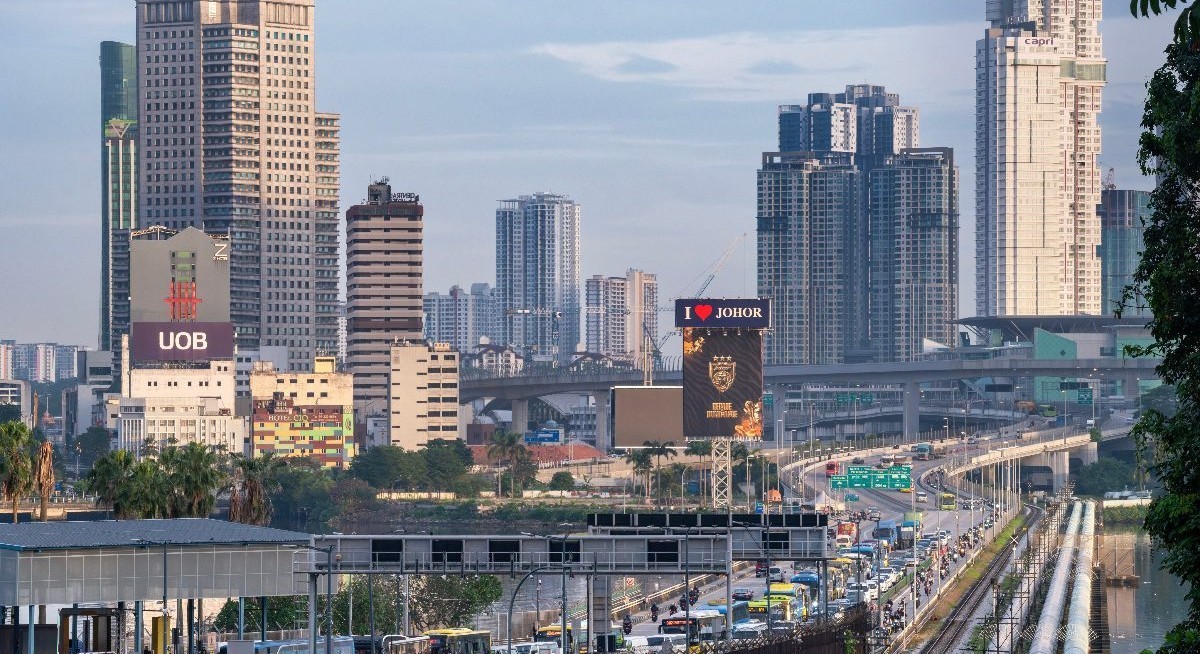Chu was speaking at the panel discussion with Haniz Nazlan and Lawrence Loh at the bank’s media day held in Kuala Lumpur on July 21. Haniz is CEO of the bank’s group consumer banking arm while Loh is the co-CEO of the bank’s group commercial and transaction banking department. Loh, who was previously managing director and head of group business banking at United Overseas Bank (UOB), was appointed to his current role in October 2023.
Even though Johor is already, by Peninsular Malaysia’s standards, not cheap, the cost differential with Singapore continues to make a “viable business case,” Chu continues.
Amid the ongoing geopolitical tensions and tariffs, now is also an opportune time for the JS-SEZ.
“JS-SEZ is not about relocating solely between [the] industrial zones of Singapore into Johor,” says Chu.
See also: JS-SEZ ‘once-in-a-generation opportunity’ for cross-border investors, says CGSI’s Tay Wee Kuang
“The geopolitical developments globally also prompted a lot of FDI (foreign direct investment) inflows into Asean. Naturally, [the] SEZ becomes one of the attractive potential destinations for that,” he adds. For instance, Chu cited the “fair bit” of financial market flows being redirected into the SEZ in the form of the Forest City Special Financial Zone, announced in August 2023. The special financial zone is a part of the broader JS-SEZ and is designed to attract investments with incentives such as 0% to 5% corporate tax for companies and a flat income rate of 15% for knowledge-based workers.
“All these are making the prospect of [the] SEZ this time round, a lot more promising [and] conducive,” says Chu.
On how CIMB intends to position itself to become the go-to bank in the JS-SEZ, Chu notes that the bank is a “full service” provider in Malaysia, which means they serve all spectrums, from small- and medium-sized enterprises (SMEs) to commercial business banking needs as well as multi-national corporations (MNCs).
See also: Singapore-based companies have committed over $5.5 bil worth of investments into Johor: DPM Gan
This means that the bank is able to facilitate conversations in terms of fresh FDI flows, which tend to be anchored by large corporations, and these corporations require a whole ecosystem of service providers, suppliers and so on, he notes.
In April this year, CIMB announced that it will commit RM10 billion (about $3 billion) to “drive economic integration and unlock cross-border opportunities” in the JS-SEZ.
When asked if the bank was looking at any particular sectors, Novan Amirudin, CIMB’s group CEO and executive director said there no sectors specifically, but the bank will follow the businesses that have gone into the JS-SEZ so far.
He noted, at a fireside chat on the same day, that the largest sector that has been receiving “a lot of FDIs” are in data centres.
The bank is also seeing “some opportunities” in family offices in the financial zone.
Furthermore, with the Johor Bahru-Singapore rapid transit system (RTS), targeted to begin services in December 2026, there will be development in real estate in the areas near the RTS. As such, the bank’s RM10 billion will cover “all market segments”, he adds.




